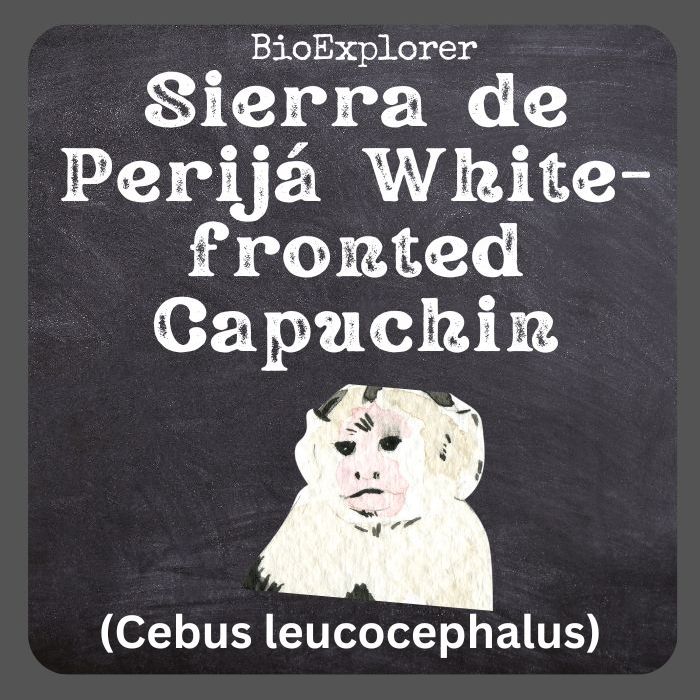
| Animalia | Primates | Cebidae | Cebus | Cebus leucocephalus |

- Common Name: Sierra de Perijá White-fronted Capuchin
- Taxonomy Classification Year: 1865
- Monkey Size: 37 to 40.7 cm (14.6 to 16.0 in)
- Skin Color(s): Black-brown
- Habitat: Forest
- Diet: Herbivorous
- Native Countries: Colombia, Venezuela
Sierra de Perijá White-fronted Capuchin Distribution
Sierra de Perijá White-fronted Capuchin Characteristics
The Sierra de Perijá white-fronted capuchin monkey[1] (Cebus leucocephalus) is a species of gracile capuchin monkey native to Venezuela and Colombia.
- It was formerly considered a subspecies of Humboldt’s white-fronted capuchin. Still, it was reclassified as a distinct species by Rylands and Mittermeier in 2013 based on genetic studies by Jean Boubli.
- Males have a head and body that vary between 37 and 40.7 cm (14.6 and 16.0 in) with a tail length of between 39.2 and 49.9 mm (1.54 and 1.96 in).
- Sierra de Perijá white-fronted capuchins have a dark brown body with lighter hair on the ventral side (belly area) and around the face.
- Their expressive faces are pink, with dark brown eyes and large nostrils above their mouths.
- Their front and hind legs are roughly the exact sizes, which is considered an adaptation since they are more ground-traveling than other New World primates.
- Its tail is semi-prehensile and fully covered in hair. Their fingers are short with pseudo-opposable thumbs, and they can move all their fingers independently of the others.
Sierra De Perijá White-Fronted Capuchin Facts
- The Sierra de Perijá white-fronted capuchin range is restricted to northwestern Venezuela and northern Colombia forests.
- They have strong jaws and teeth. Male canines are about 16 percent larger than females. In fact, their tooth enamel is the thickest of any non-human primate, allowing these tiny creatures to pierce the hard shells of palm nuts.
- Unlike spider monkeys, Sierra de Perijá white-fronted capuchin monkeys cannot hang by their tails, which cannot support their body weight. Instead, they use it for support, often wrapping it around a branch as they search for balance food.
- The size of their brain is large compared to the size of their body.
- Like all capuchin monkeys, they exhibit self-anointing behavior: rubbing plants, mud, or insects on their bodies.
Suggested Reading: Most Popular Types of Monkeys
Cite This Page
APA7MLA8Chicago
BioExplorer.net. (2025, May 28). Sierra De Perijá White-fronted Capuchin. Bio Explorer. https://www.bioexplorer.net/animals/mammals/monkeys/sierra-de-perija-white-fronted-capuchin/.
BioExplorer.net. "Sierra De Perijá White-fronted Capuchin" Bio Explorer, 28 May 2025, https://www.bioexplorer.net/animals/mammals/monkeys/sierra-de-perija-white-fronted-capuchin/.
BioExplorer.net. "Sierra De Perijá White-fronted Capuchin" Bio Explorer, May 28 2025. https://www.bioexplorer.net/animals/mammals/monkeys/sierra-de-perija-white-fronted-capuchin/.











